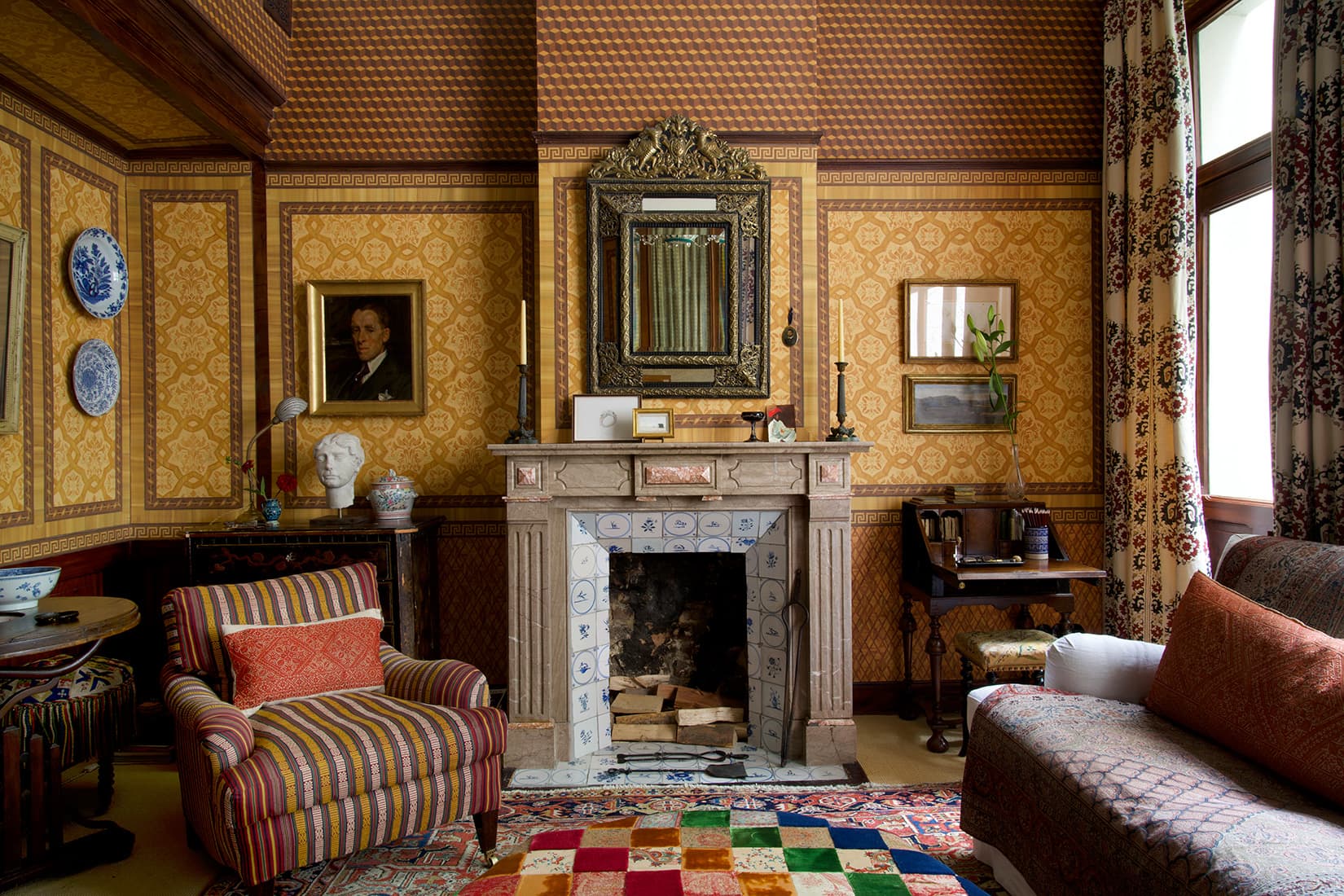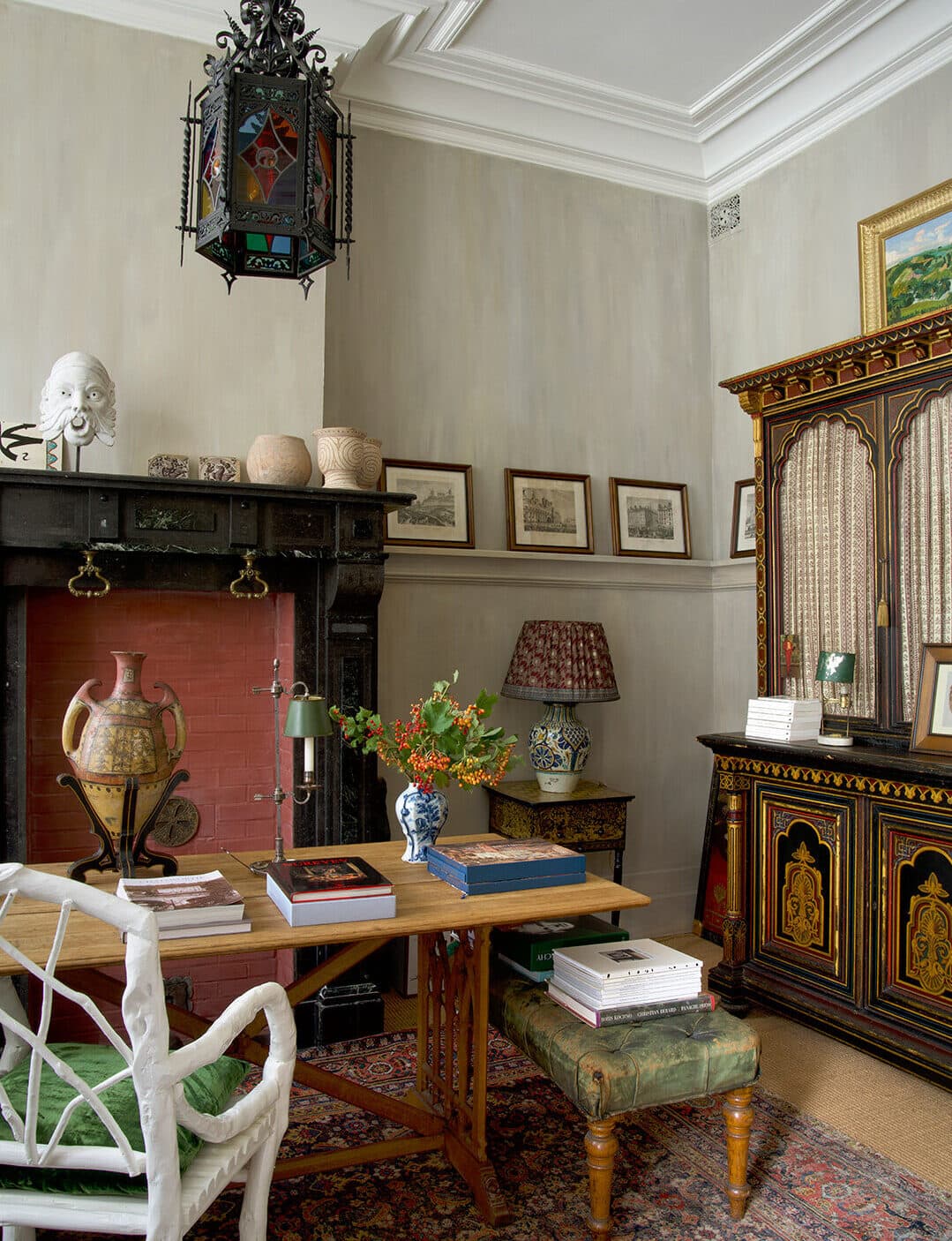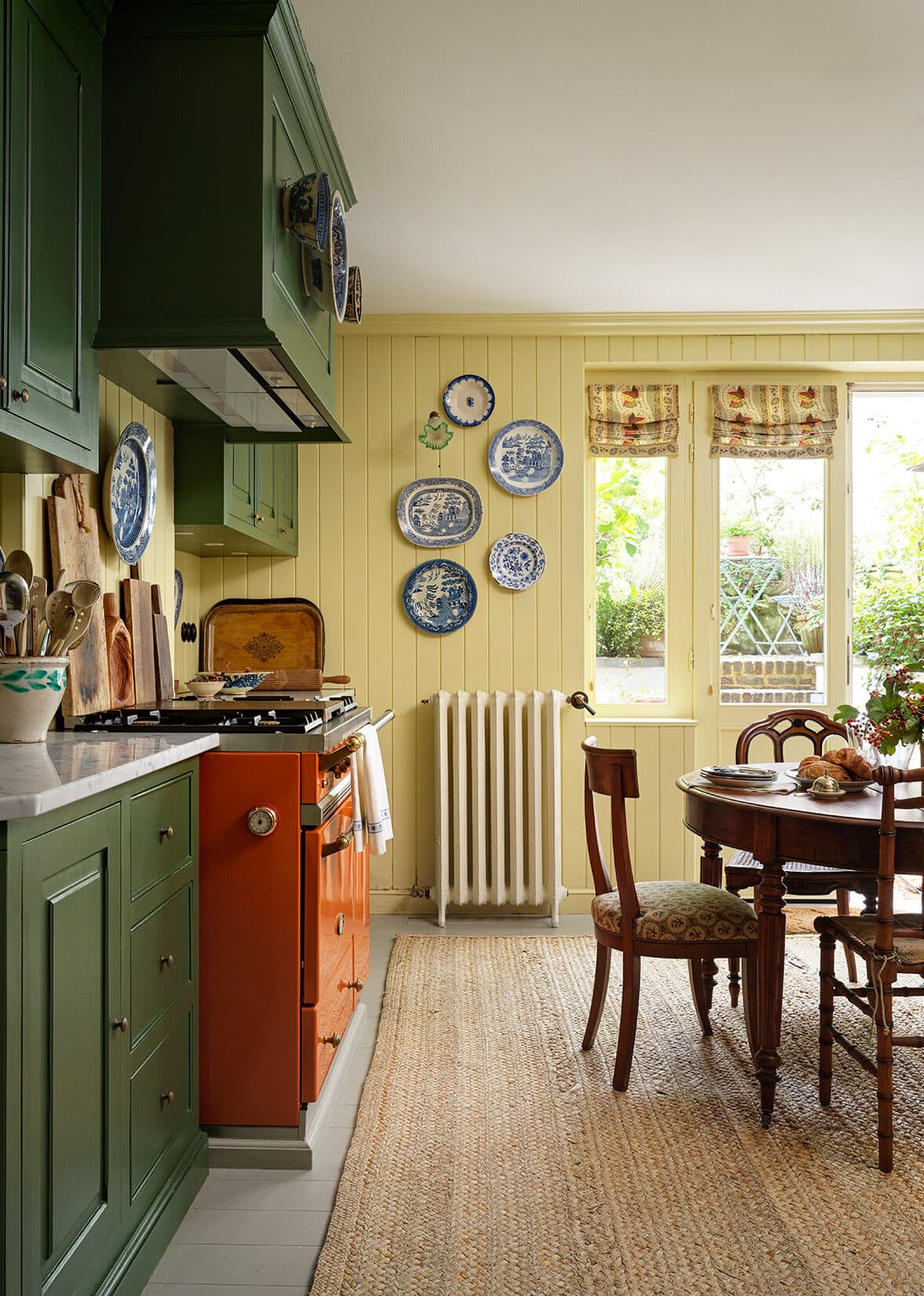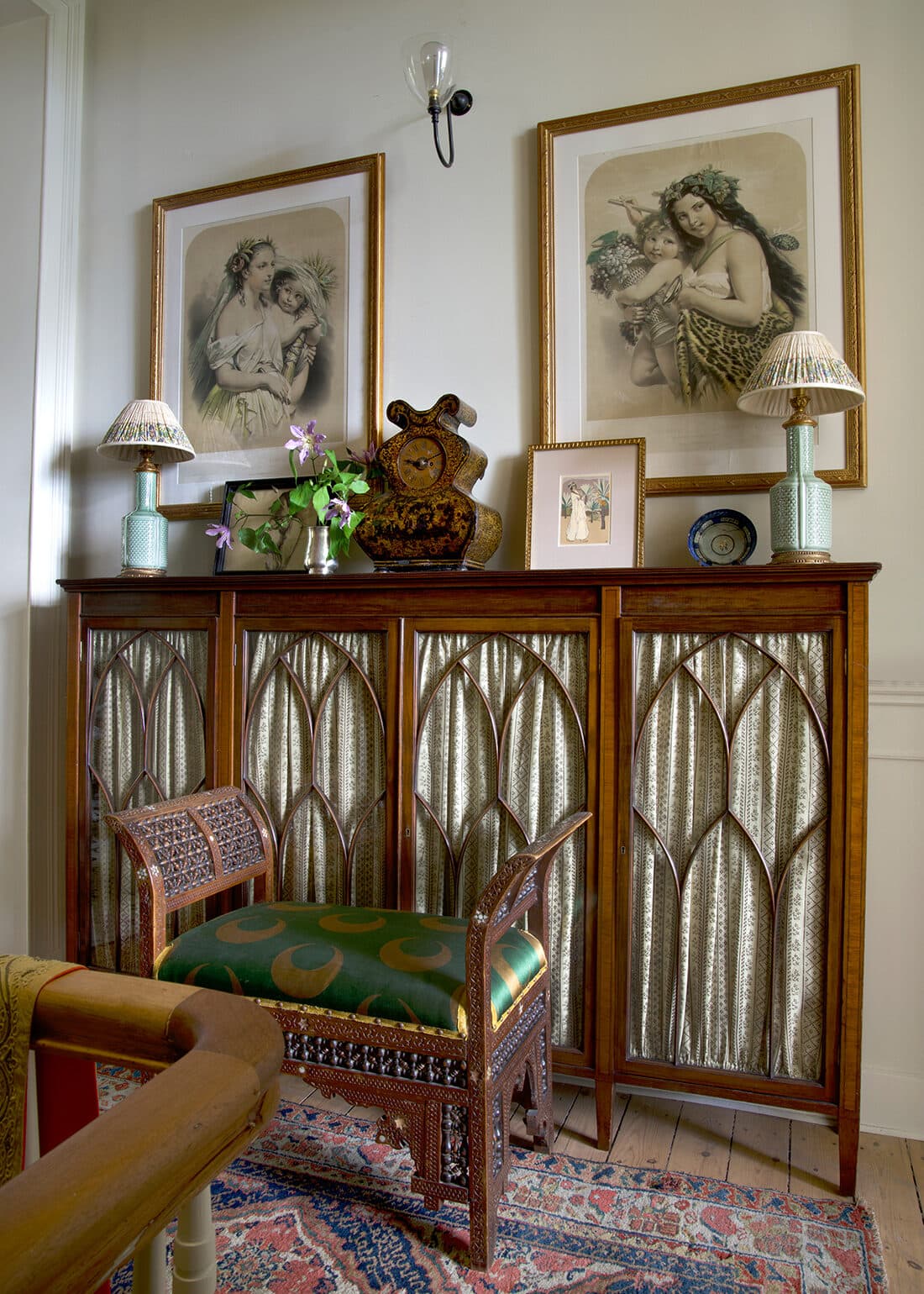Julien Devergnies knows well that those who love beauty can be easily misunderstood—by others and by themselves. As a child growing up in 1990s Belgium, he loved to walk past Villa Beau- Site, the Art Nouveau townhouse that architect Arthur Nelissen built for himself and his wife in 1905. Five stories tall and uncommonly narrow, with an ornately geometric white-brick facade, it masterfully combines the lush curves and clean lines of an elaborate European pastry. A passion for pastries, alas, might have been more explicable in a young boy than one for the decorative arts. When it came time for college, Devergnies’s parents compromised by letting him pursue fashion instead.
-

Devergnies and Jo, an Airedale terrier, in the entryway of the house. The Regency mirror was purchased at Nicky Haslam’s Hunting Lodge sale at Bonham’s London. The pendant light is by Jamb; the lamps are Robert Kime, with custom shades.
SIMON BROWN -
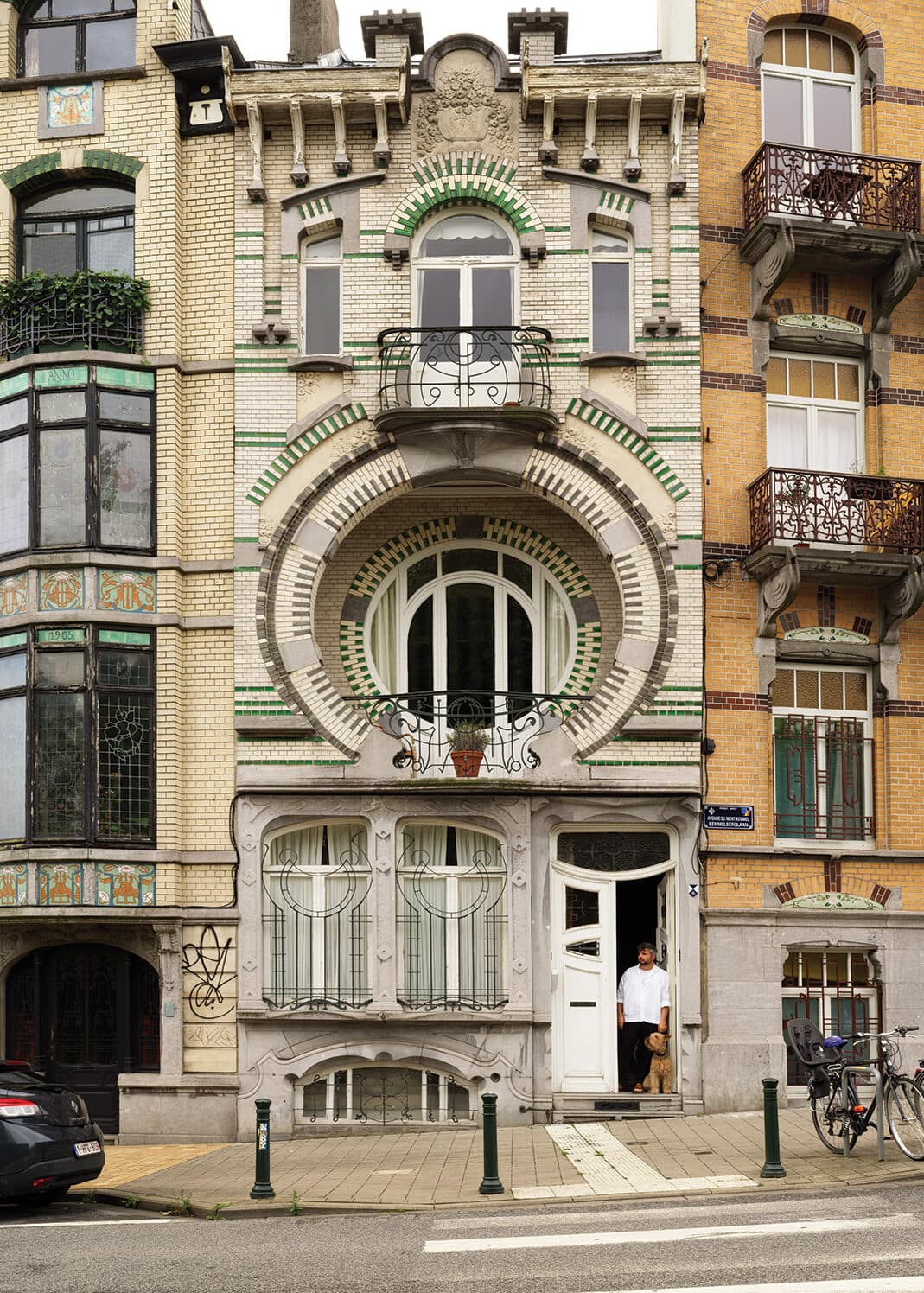
The Art Nouveau facade of Villa Beau-Site, built in 1905 as the private residence of Dutch-born architect Arthur Nelissen and his wife.
SIMON BROWN
“For many years, I felt superficial for loving beautiful objects,” he says. “In fact, I began to worry that I had a problem! It was a bit weird for a young man to live like Madeleine Castaing, in a heavily decorated apartment full of antiques.” At his first fashion job, he became close friends with a young woman from Japan, who explained the Japanese belief that objects have souls. “She helped me come to peace with that part of myself,” he says, as did Nicolas Woit, a freelance fashion designer with whom Devergnies fell in love.
Self-acceptance can be a long and winding process, of course. Devergnies spent his 20s in Paris, working for the haute couture house Maison Margiela. In 2015, back in Belgium, he joined an antique jewelry firm, and together with Woit, purchased Villa Beau-Site. As they were waiting to move in, Woit’s mother—a former interior designer—dropped by with a friend, the founder of design studio Percaline, who was so enchanted by the couple’s apartment that when she decided to retire several months later, she asked Devergnies to take over her firm.
-
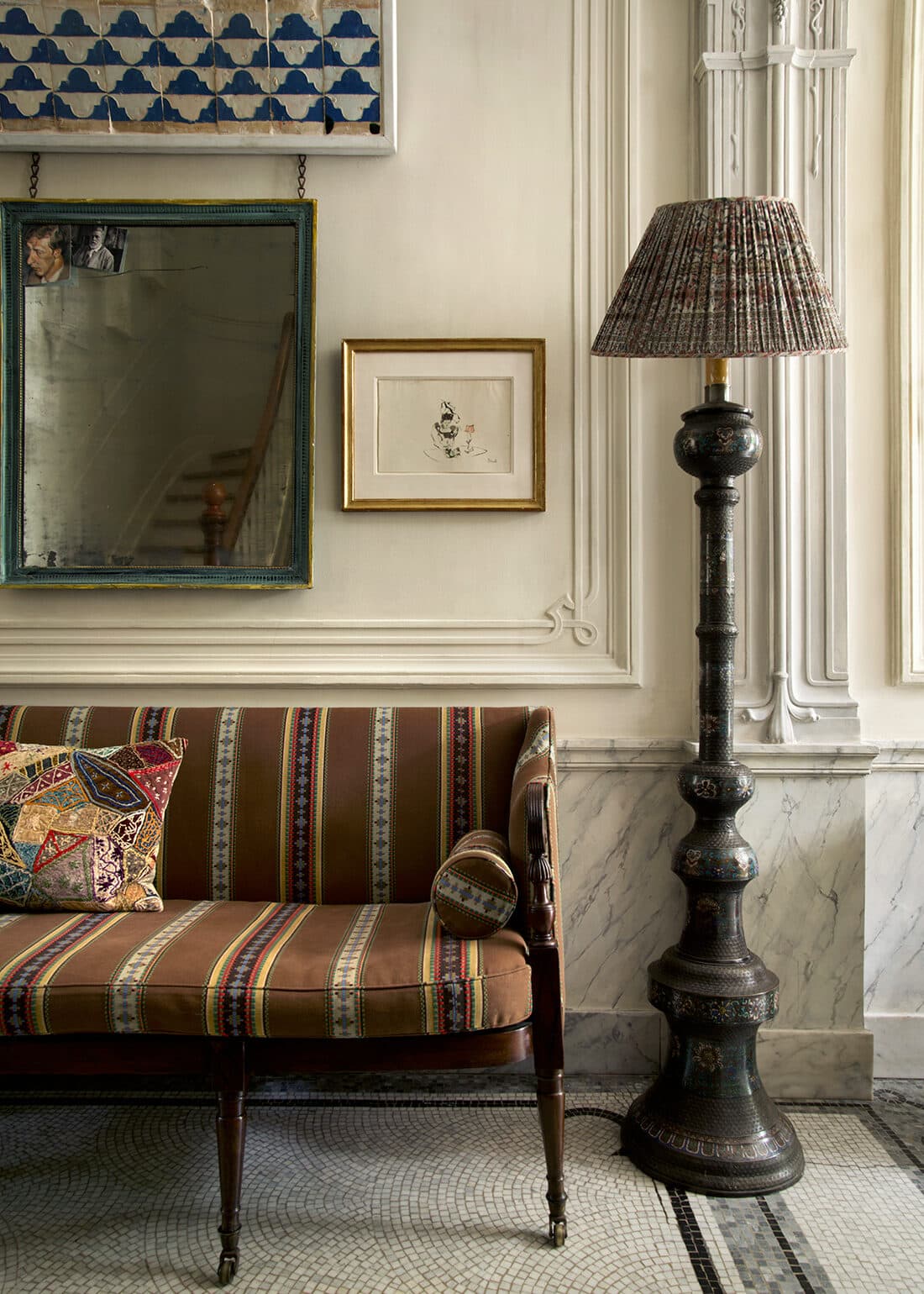
The hallway is spare, allowing the original tile floor and faux-marble wainscoting to speak for themselves; a strip of blue and white Spanish tiles, circa 1520, a painted mirror from the Yves Saint Laurent estate, and a framed 1930s artwork by Christian Bérard hang above the Regency sofa.
SIMON BROWN -
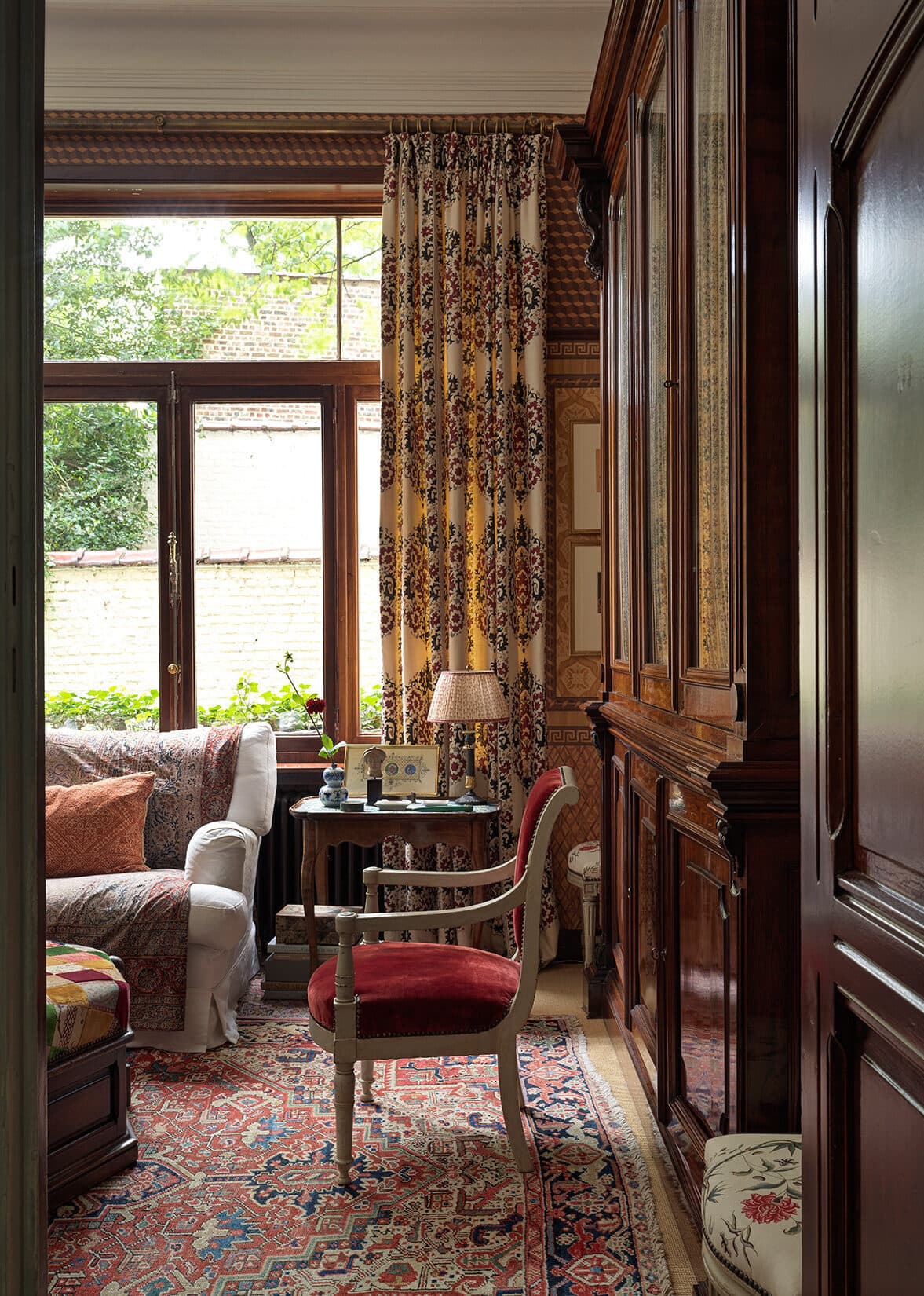
Devergnies and Woit, a fashion designer, spend most evenings in the pleasantly moody sitting room. “We usually use this room at night, so I wanted it to be pleasant even with artificial lights,” says Devergnies.
SIMON BROWN
That was in 2016. Now 37, Devergnies has spent the last seven years working exclusively with beautiful houses and furnishings. “Every day I pinch myself that I actually get to live in this place, and run this studio,” Devergnies says. He inherited most of his predecessor’s clients, mostly hailing from Belgium, France, Switzerland, and Sweden, many of whom are close to the royal families, and extraordinarily private. “Doing houses and decoration is deeply personal,” he says. “Usually we’re working on inherited homes built in the early 1700s. Getting to know the family, seeing how they live, learning about their belongings—it really is a privilege and an honor.” Oftentimes the spaces are so beautiful they need very little in terms of decoration, so Devergnies turns his energies to finding new fabrics and useful pieces to mix with what his clients already have.
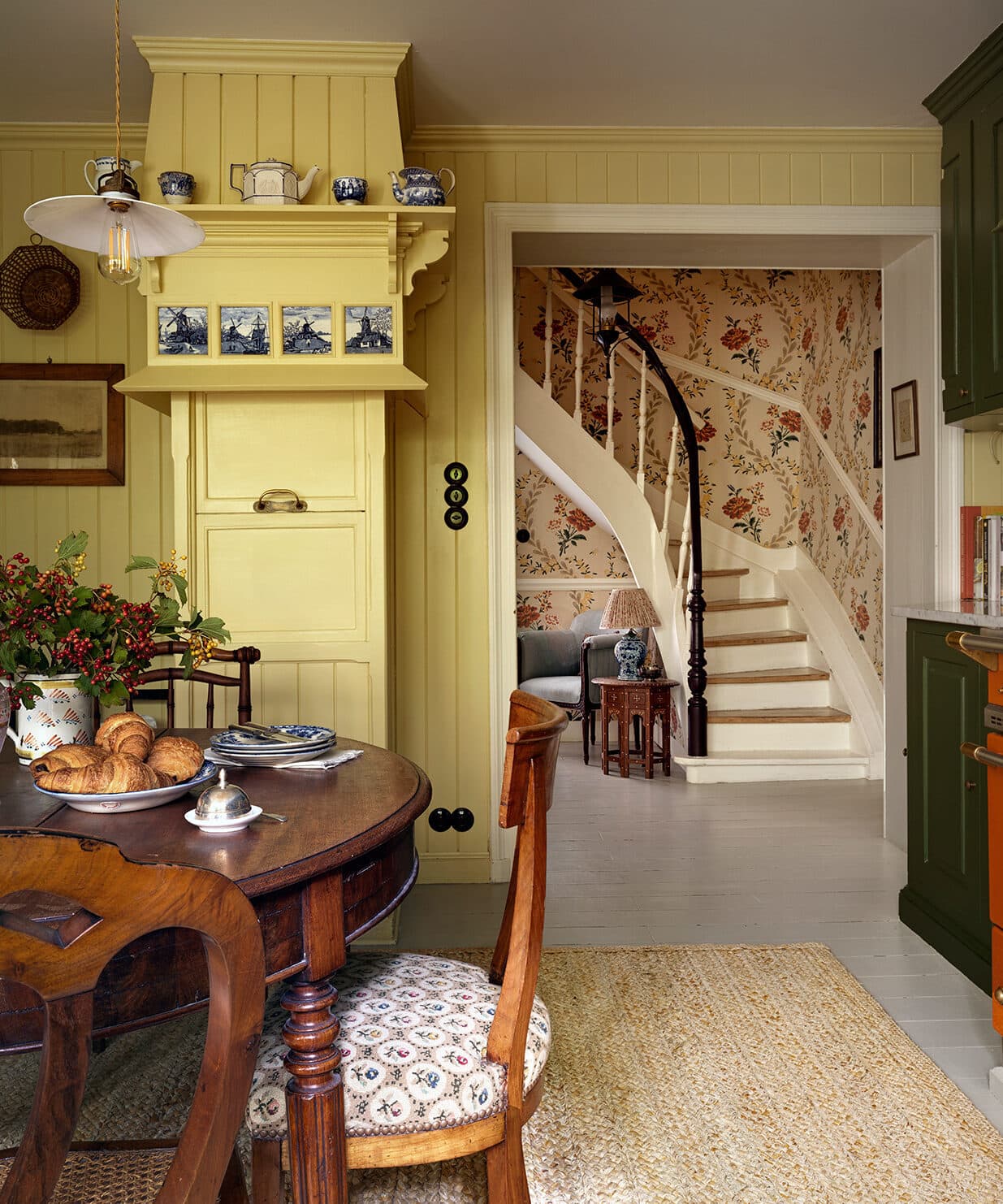
The pale-yellow kitchen—the paint is a custom mix—was inspired by Claude Monet’s dining room at Giverny and is filled with an array of family heirlooms, including the table and chairs. In the stairwell, Devergnies installed a hand- blocked rose-print wallpaper by Mauny that was designed at the end of the 19th century.
SIMON BROWNRedecorating Villa Beau-Site was more challenging. Though five stories tall, the two-bedroom, two-bathroom house is actually quite small—not even 1,000 square feet—with just two rooms on each floor. The building wasn’t well-loved when they bought it, and because it’s a protected site, their ability to make it more conducive to modern living was strictly limited.
So Devergnies treated the walls throughout like blank canvases. “In Belgium, we have lots of fine wallpaper,” he says, “and I love the ones made by hand. They give so much depth to a room, and even the slight imperfections—a fold, or a color that didn’t print just right—make them feel incredibly special.” For the dining room and hallway, he worked closely with an artist to achieve the effect of “an old house in Italy with plaster that’s somewhere between drying and dirty,” he says. “I wanted them to look like they were never repainted, but in a nicer way.” The result—a subtly striated gray, beige, and blue—changes with the light. A Castaing disciple, Devergnies has used her Rayure Fleurie fabric in every place he’s ever lived; at Beau-Site, it appears as wallcovering and curtains in the spare bedroom, with its massive circular window. (The room is currently occupied by the couple’s 16-year-old niece, who is living with them while studying ballet in Brussels.)
-
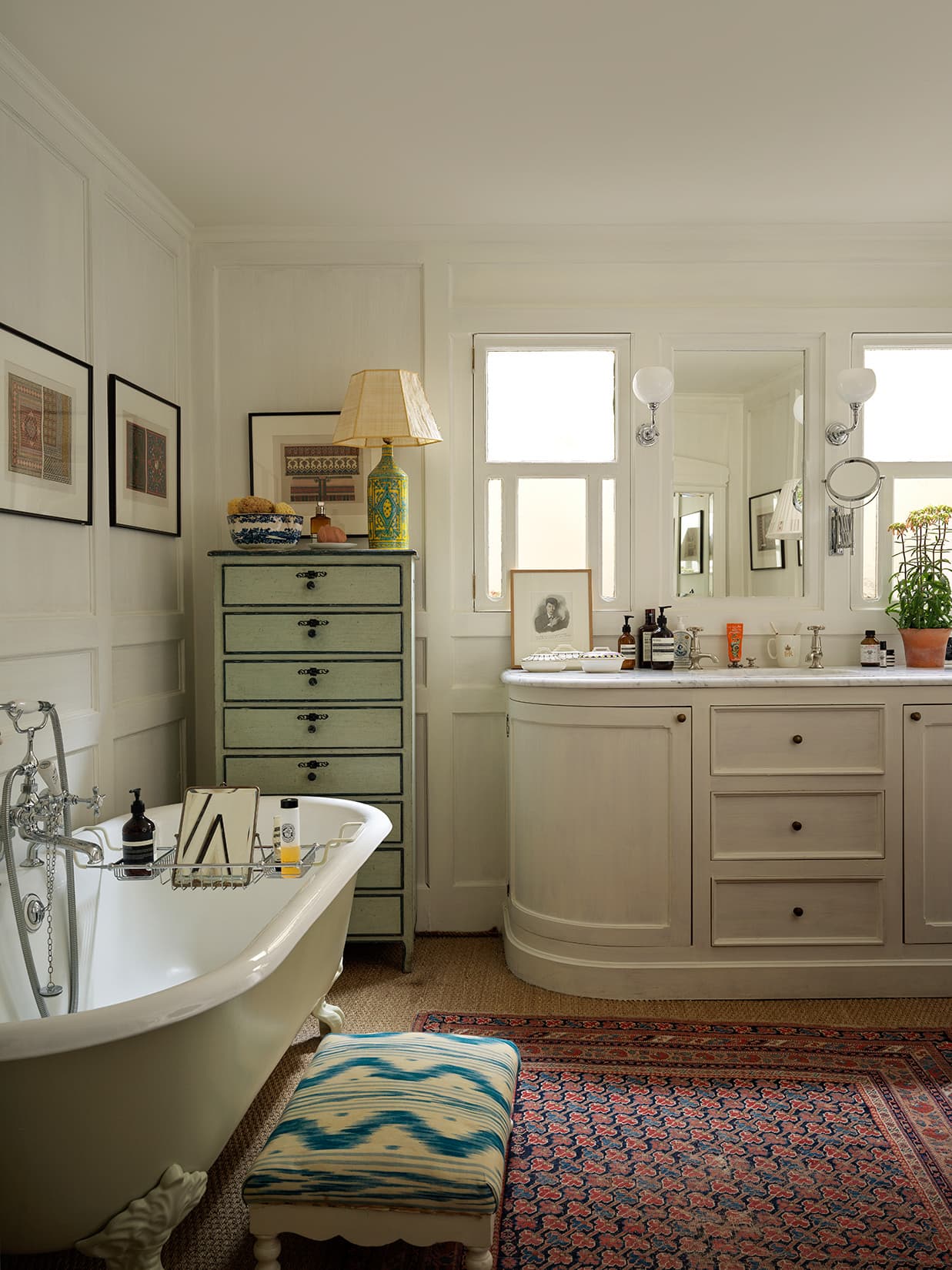
The spacious primary bathroom is not original to the house—it was formerly a maid’s room or laundry room. A stool in Pierre Frey’s Toile de Nantes fabric sits next to the clawfoot tub.
SIMON BROWN -
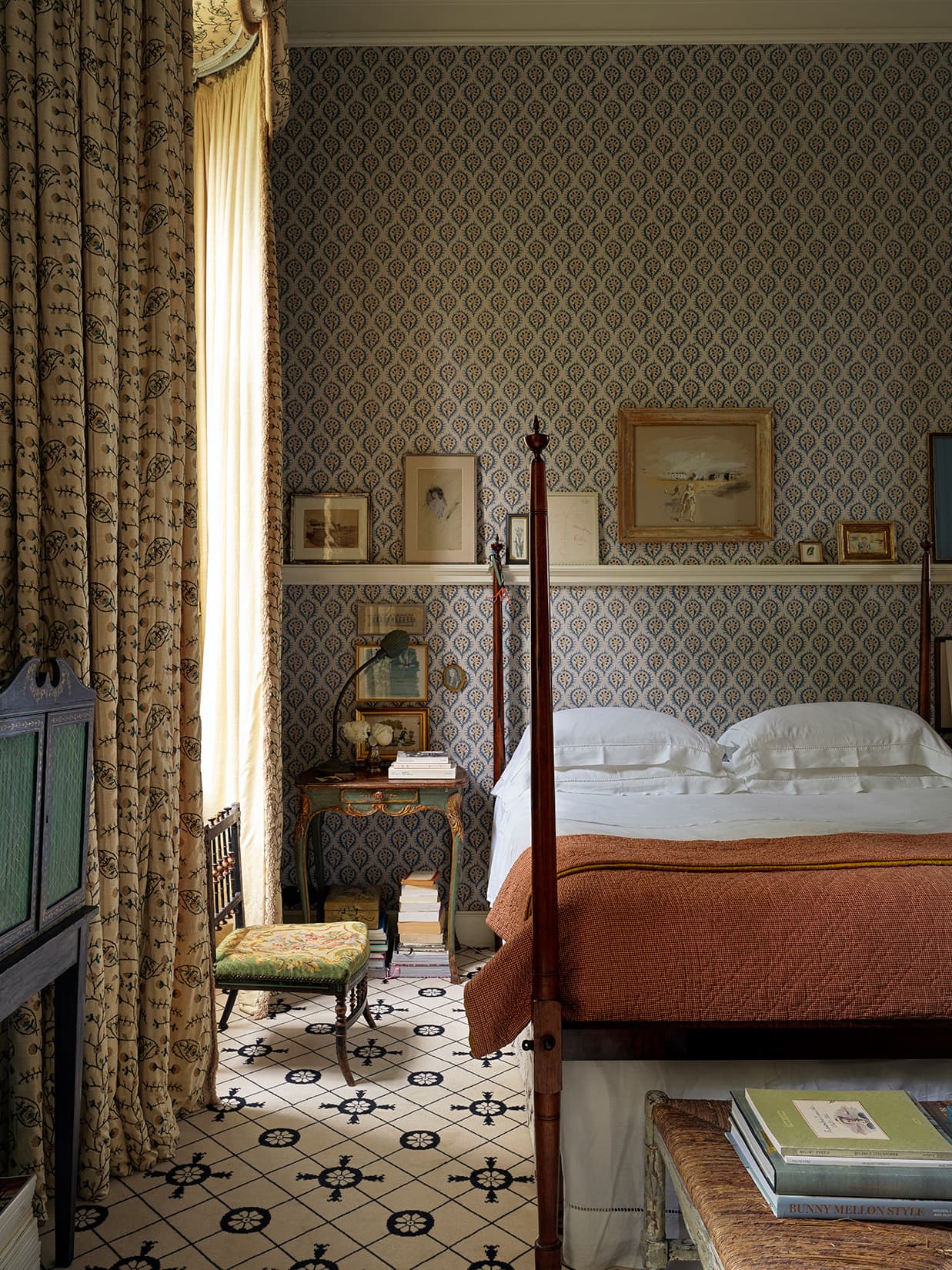
In the primary bedroom, covered in handmade wallpaper by Atelier D’Offard, artworks by Pierre Le-Tan, Lila de Nobili, Jean Cocteau, Janine Janet, and Christian Bérard are displayed on a ledge; the bedside table is from Hubert de Givenchy’s Christie’s sale.
SIMON BROWN
Devergnies found nearly all of the furniture online. “I’m an online kid!” he laughs. “I love auctions, but we don’t have as many auction houses in Belgium as in Paris or London or the U.S. I prefer the freedom of buying online, how it allows me to focus on a piece without being influenced by the impressiveness of the auction rooms.” Oftentimes, he sees beauty in what others consider ugly. “To me, beauty is not perfection. It doesn’t need to be precious, or expensive. It’s something that makes you feel happy.”
-

A marble mantel is arranged with special objets, including a bird that a teenaged Devergnies found at a flea market. Murano glass sconces from the 1950s and a 19th-century European cut-glass chandelier (reflected in the Napoleon III mirror) pick up the color of the walls.
SIMON BROWN -
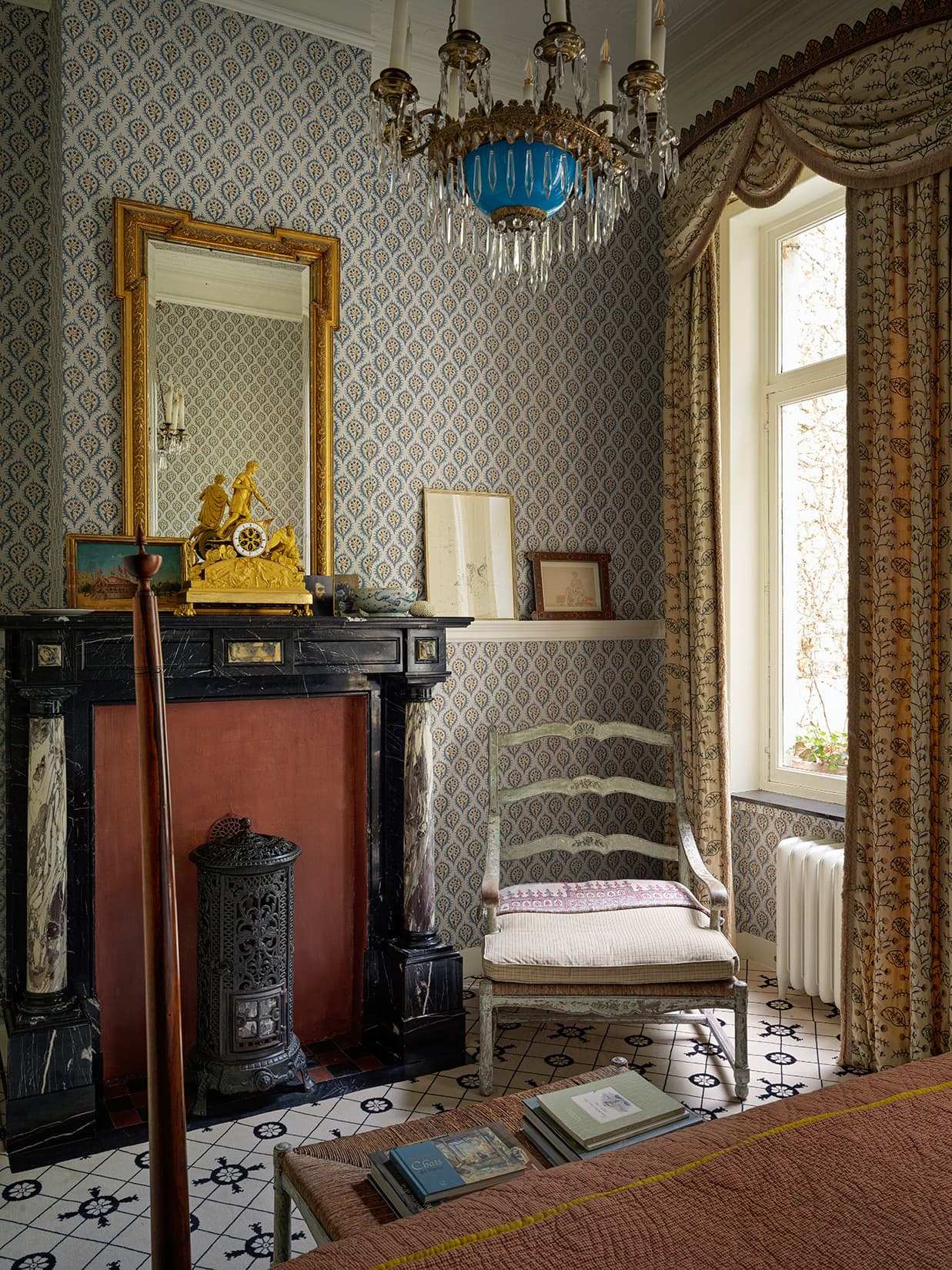
“I started with the wallpaper and then quickly found the fabric and curtain pelmets at auction,” Devergnies says of the primary bedroom’s design scheme.
Simon Brown
In his seminal 1964 book, An Illustrated History of Interior Decoration, Mario Praz wrote that “hypersensitive nerves and love of furniture are indeed connected phenomena.” Sure enough, at the end of a day, Devergnies likes to come home from work, take off his shoes, and sit in the dining room with an object or a book in his hands. He’ll stay there for 20 minutes or so, gazing at whatever he’s chosen to hold, and unwind. “I’m an anxious kind of person,” he says, “many demons in my head, lots of melancholy. When I’m looking at something I find beautiful, I feel peaceful, and better in my own skin.”
THIS ARTICLE ORIGINALLY APPEARED IN VOLUME 10 OF FREDERIC MAGAZINE. CLICK HERE TO SUBSCRIBE!















